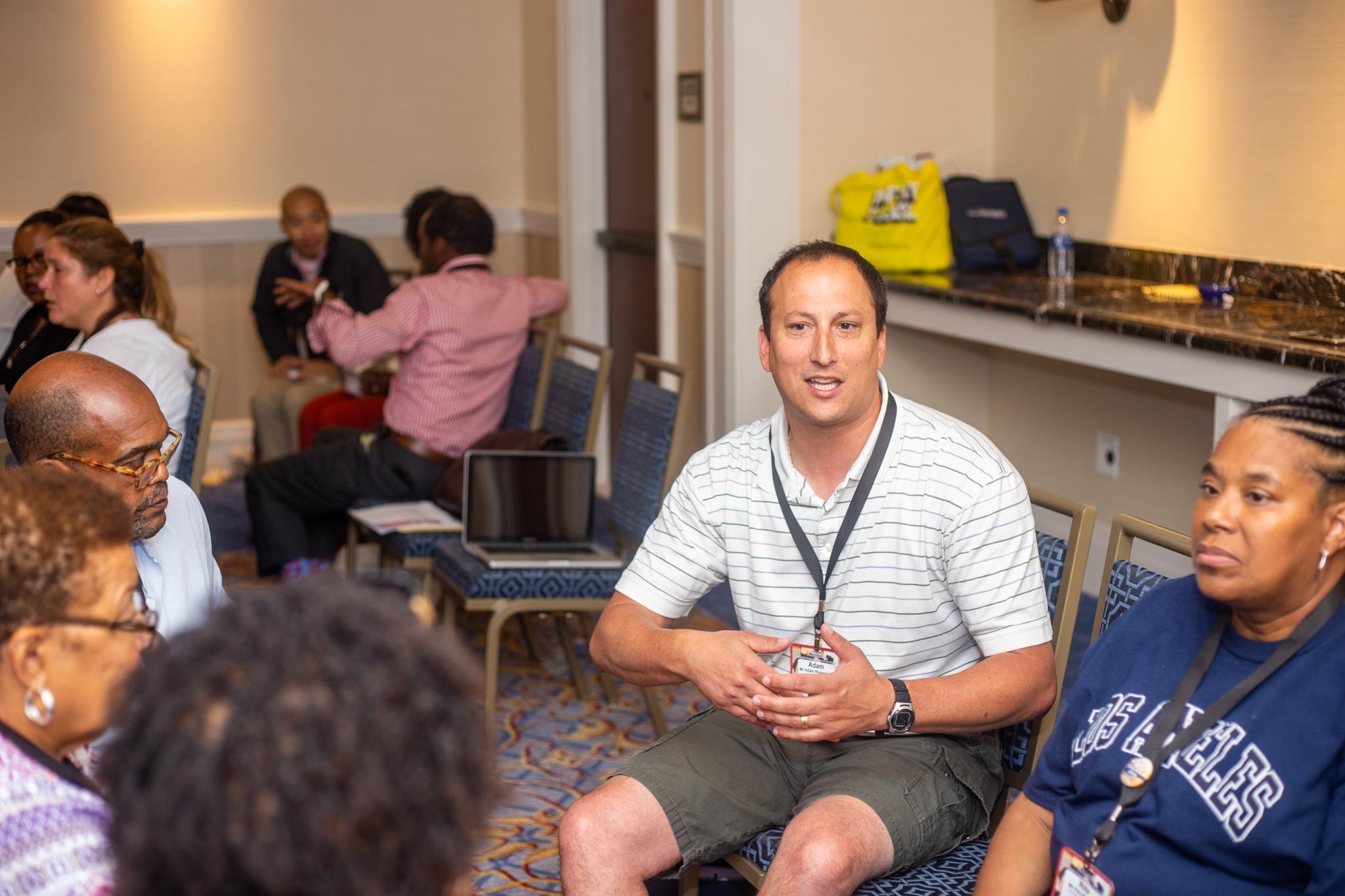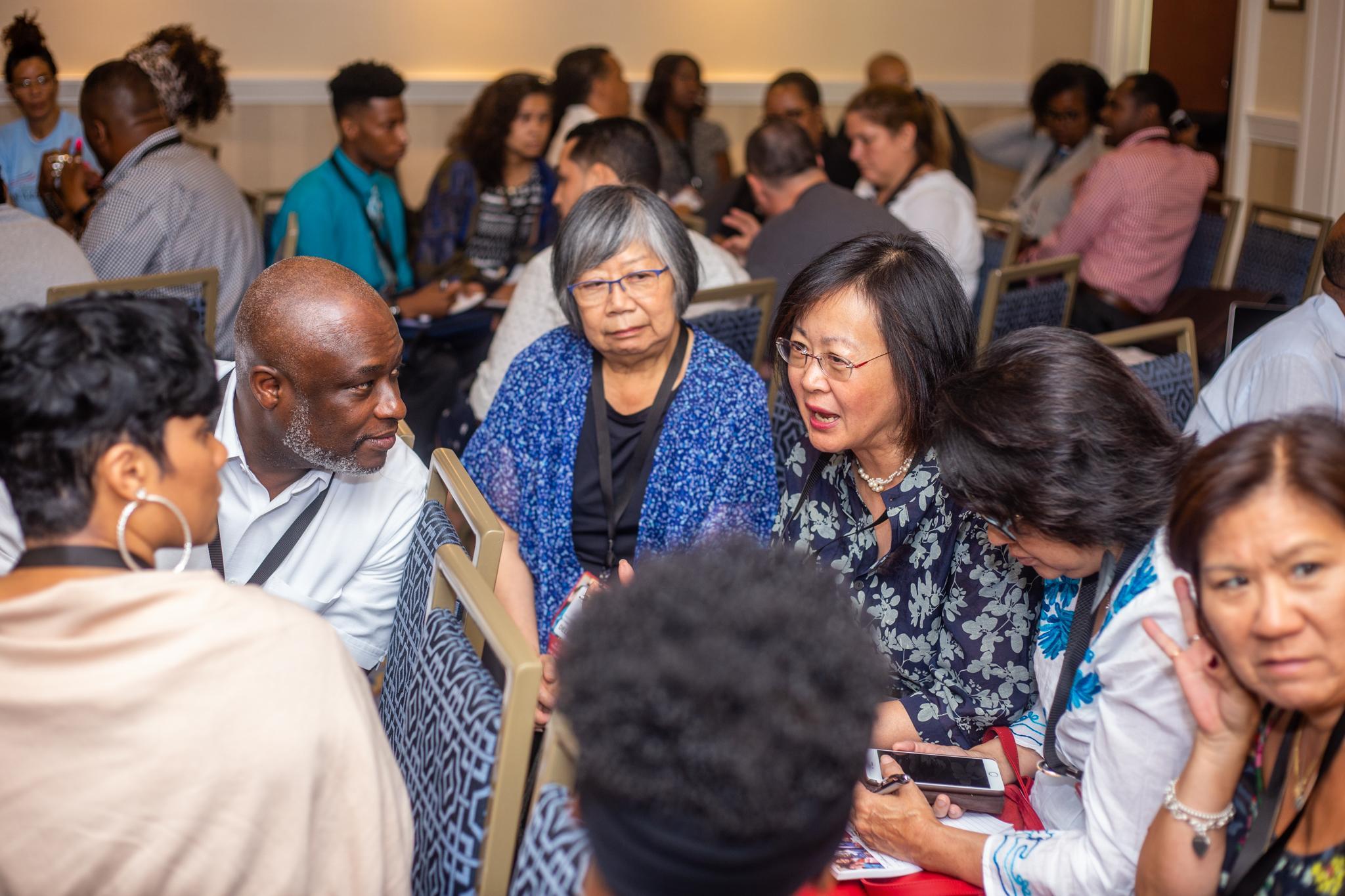
To help school leaders better understand more about all the hype surrounding the term “social justice,” facilitator Iona Jefferson introduced two of the more accomplished educators experienced in creating environments for social justice Thursday at a pre-convention presentation on understanding and promoting equality and justice in our increasingly diversified schools.
Dr. Nia Woods Haydel is Assistant Professor of Urban Studies and Public Policy at Dillard University, and has been a higher education professional for 20 years working in Student Affairs, Enrollment Management, Academic Affairs and Intercultural Relations. She is also Director of the Academic Center for Excellence, as well as the Director of the Thompson/Cook Honors Program.
And Dr. Kijua Sanders-McMurtry, who revealed during her presentation that she had once been a high school dropout, now the inaugural Vice President for Equity and Inclusion and Chief Diversity Officer at Mount Holyoke College.
Together they engaged participants to their presentation in an interactive session in which they shared their perspective and understanding of what social justice means, while gathering input from the participants on what the key principles should be in a social justice learning environment.
Dr. Woods shared with school leaders that she has learned what her points of privilege were and now uses them to advantage, suggesting that “sometimes feeling guilty about having privilege can hinder you in the work you do.” Instead, she suggested, “You can use your privilege to advance the cause of social justice.”
The two talk leaders urged participants to start thinking about what they can do to create more equitable environments by examining critical factors such as:
Implicit/Unconscious Bias; Ethnocentrism; Microaggressions; Power; Privilege;
Intersectionality; and, Emotional Labor.
“Diversity,” Sanders-McMurtry averred, “is about inclusive excellence,” and asked school leaders to consider: “What does it mean to develop a welcoming community?”
After dividing the participants into three self-selecting groups of roughly six people, the two talk leaders suggested the groups discuss:
- What are your schools distinct issues?
- Has the landscape of your school changed and how has it impacted your work?
- How does your school define social justice?
- Are there clear goals around diversity and inclusion?
After fielding the contributions offered by the participating groups, Woods asked them to consider what individual acts relating to social justice are, such as cultural injustice; institutional levels of oppression, and marginalization. And Sanders-McMurtry raised the importance of determing what the sites of change should be. And where can you impose change – especially with regard to issues of justice?
“Consider what actually could happen if you act audaciously?” she prodded. “What would justice in our schools actually look like?”
Thereupon the groups were encouraged to develop three key tenets for social justice. Several groups responded with their suggestions. Among them:
- All children can and want to learn
- Know who our students are
- Work with community based orgs
- Determine the level of leadership commitment
- Ensure equitable funding
- Create innovative ways to get funding (to which Woods quipped, “People will treat you differently when you have money.”)
Other suggestions were:
- Employ restorative practices
- Create school-wide discussion of concerns
- Develop a strong social justice culture among staff and faculty
- Develop and stick with a structure to deal with inequities
Sanders-McMurtry strongly recommended that school leaders make a climate assessment, “because none of us see what others see.” What are your demographics? Is there an existing assessment? She also urged utilizing capacity building. And finally: “What are the infrastructural changes that need to take place?”
Above all, though, she urged identifying an achievable level of possible change. “Then think strategically and myopically and develop a plan. Explore your issues; unpack them; and think strategically about effecting change.”

